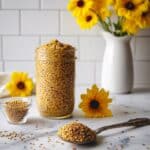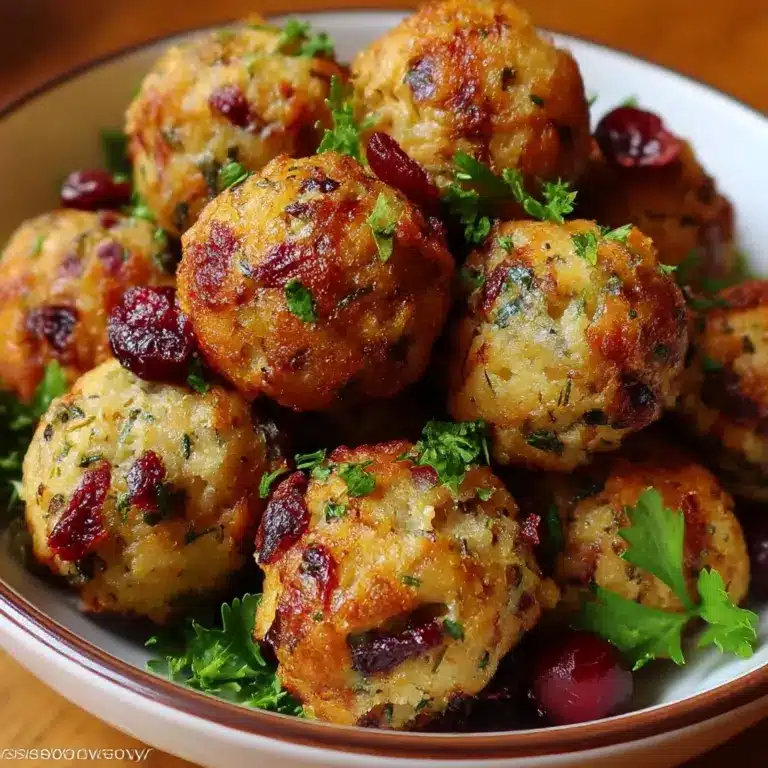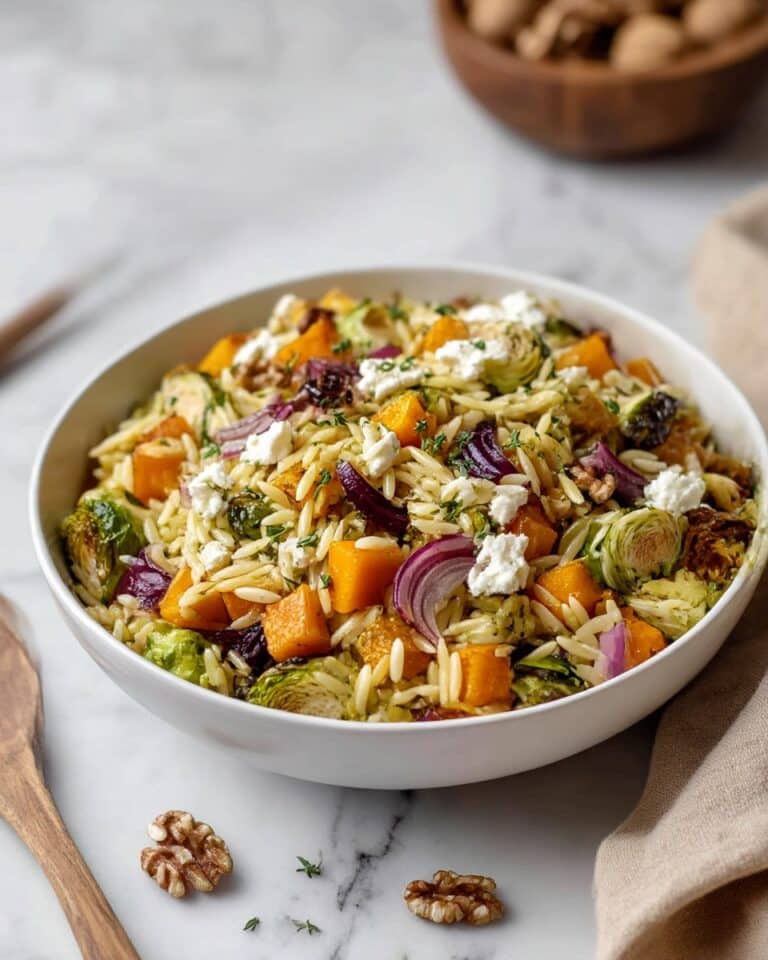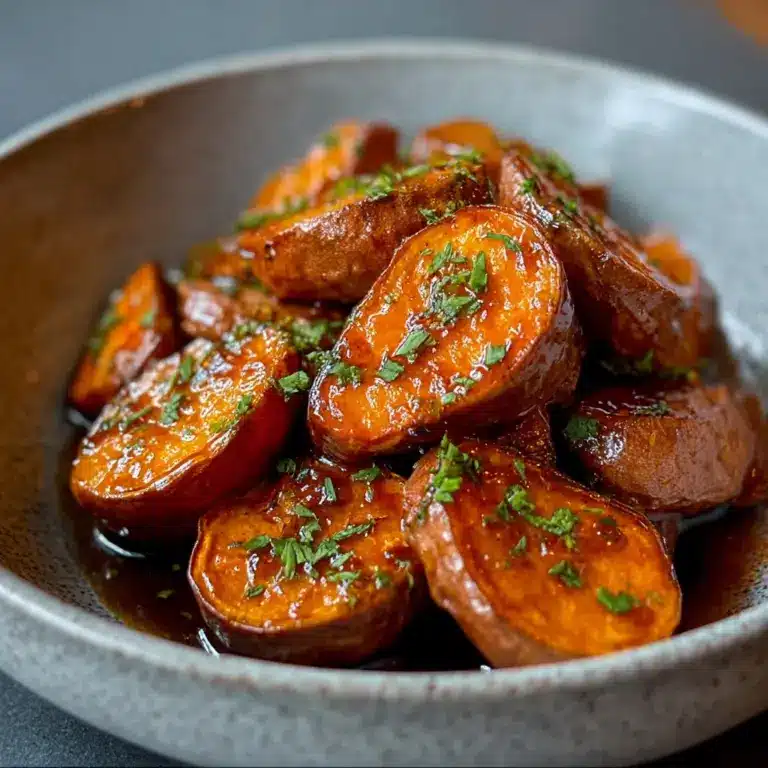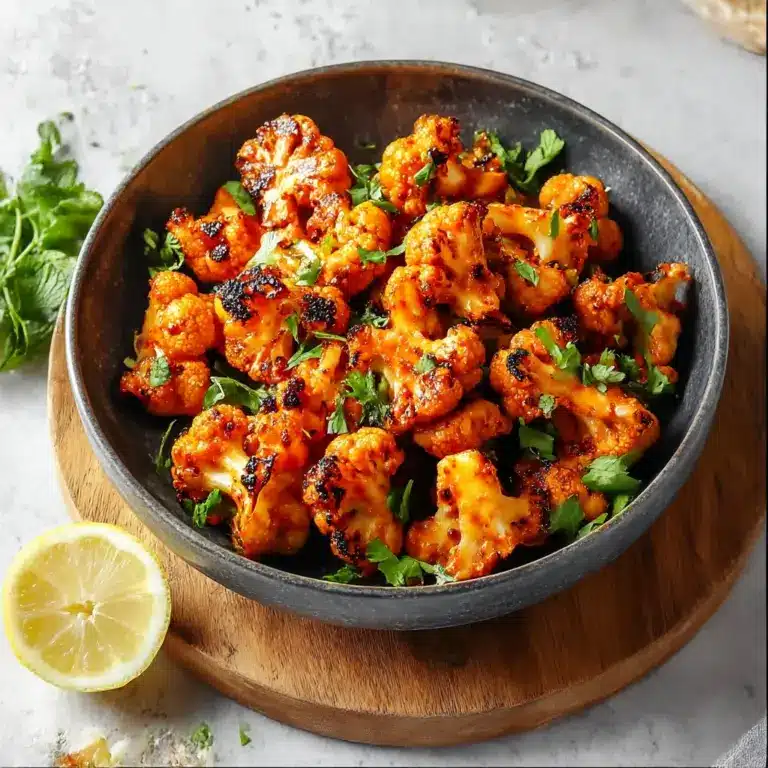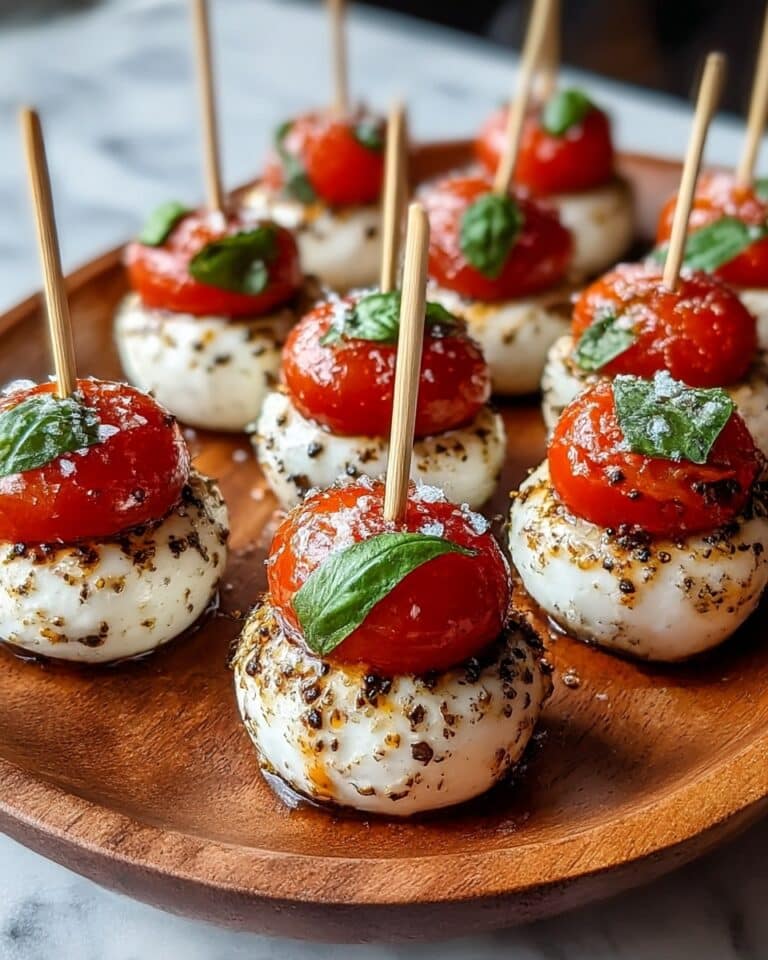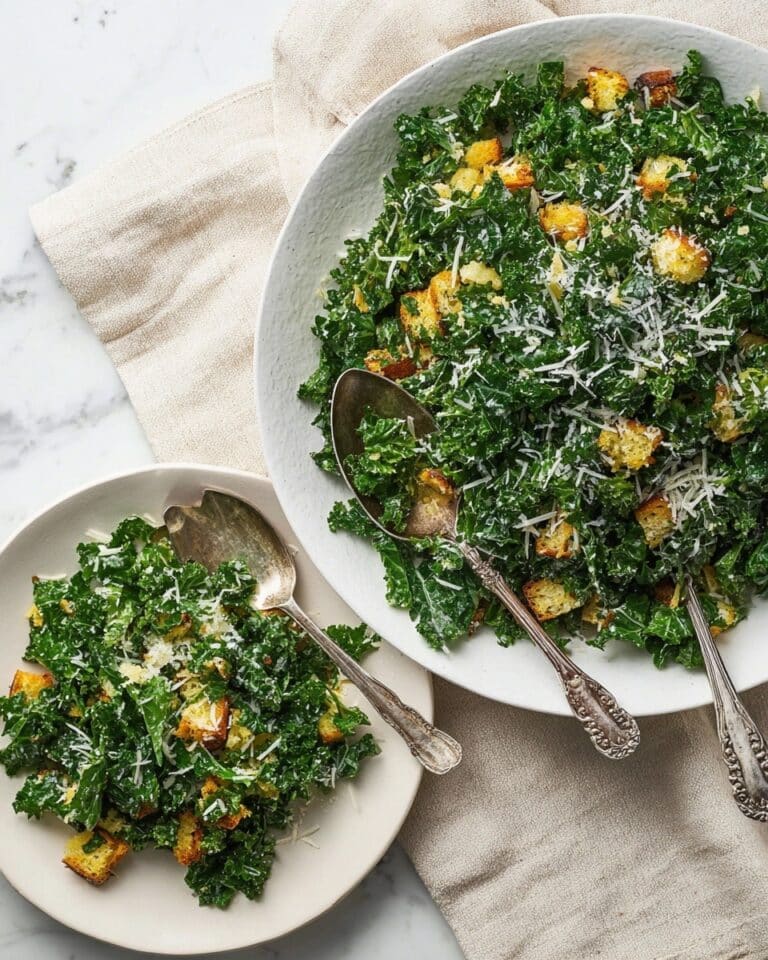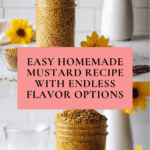Easy Homemade Mustard (with Infinite Variations) Recipe
Introduction
Making your own mustard at home is simple and rewarding, allowing you to customize the flavor exactly to your liking. This easy homemade mustard recipe uses basic ingredients and offers a tangy, slightly sweet taste with endless variation possibilities.
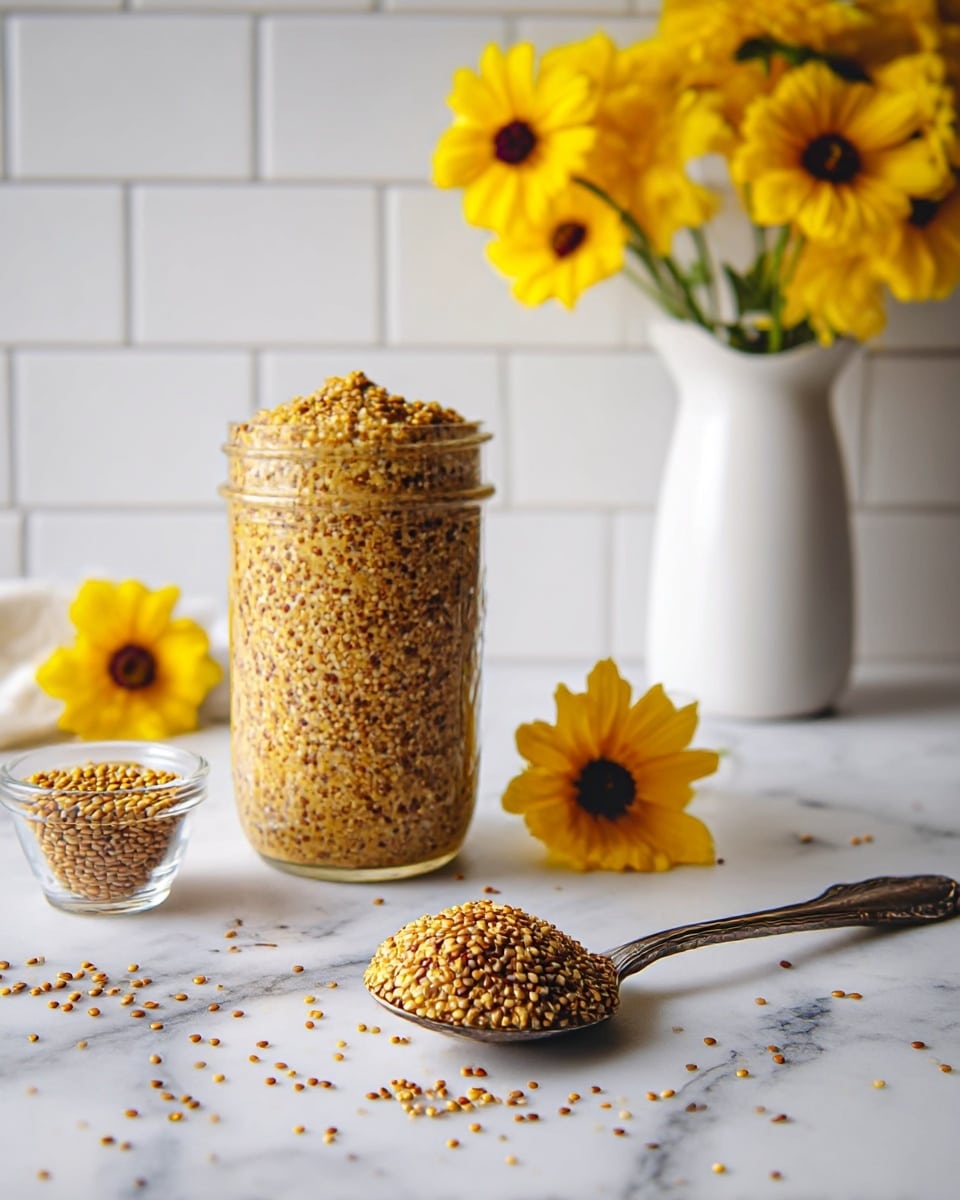
Ingredients
- 0.5 cup yellow mustard seeds
- 0.5 cup brown mustard seeds
- 1.5 to 2 cups natural apple cider vinegar
- 3 tablespoons maple syrup
- 2 teaspoons sea salt
Instructions
- Step 1: Add the yellow and brown mustard seeds to a large measuring cup or other glass vessel.
- Step 2: Pour in enough apple cider vinegar to fully submerge the mustard seeds, then stir in the maple syrup and sea salt until combined.
- Step 3: Cover the container and let it sit on the countertop for 2 to 3 days. Check daily and add more vinegar as needed to keep the seeds submerged.
- Step 4: After this initial aging, use an immersion blender to blend the mustard until it reaches your preferred texture.
- Step 5: Transfer the blended mustard to sealed glass jars and store them in the refrigerator.
- Step 6: Allow the mustard to age in the refrigerator for at least 2 to 3 weeks before using to develop the best flavor.
Tips & Variations
- For a spicier mustard, increase the proportion of brown mustard seeds or add a pinch of cayenne pepper.
- Try substituting honey or agave syrup for maple syrup to adjust sweetness.
- If you prefer a smoother mustard, blend longer or strain out larger seed pieces.
- Use different vinegars such as white wine or malt vinegar to change the acidity and flavor profile.
Storage
Store your homemade mustard in sealed glass containers in the refrigerator. It will keep well for several months. The flavor will continue to mellow and improve over time. When ready to use, give it a good stir and use as you would store-bought mustard.
How to Serve
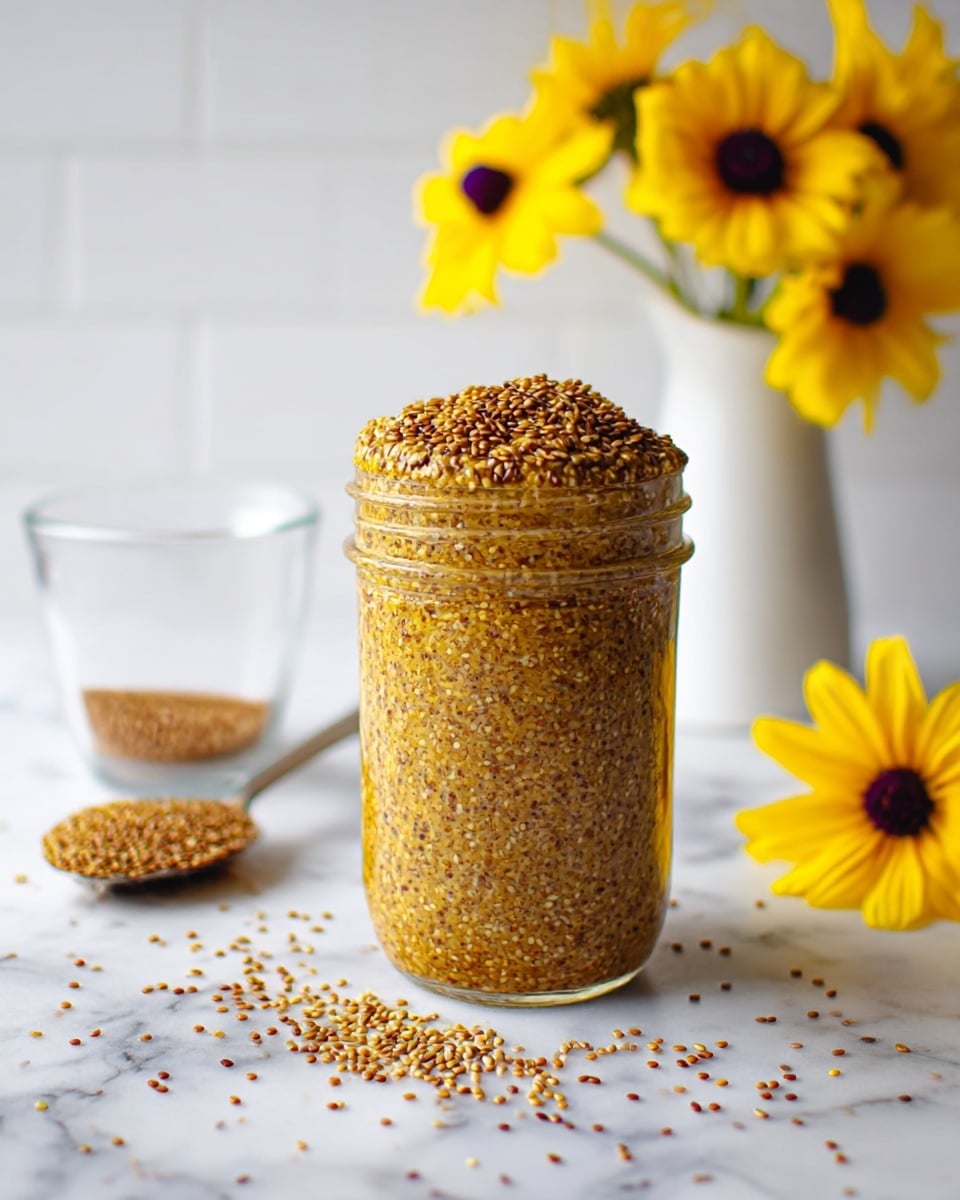
Serve this delicious recipe with your favorite sides.
FAQs
Can I use only yellow or only brown mustard seeds?
Yes, you can use just one type of mustard seed, but combining yellow and brown provides a good balance of flavor and heat. Experiment to find your preferred taste.
How long should I wait before using the mustard?
While you can use it after the initial blending, allowing the mustard to age in the refrigerator for at least 2 to 3 weeks will deepen and improve its flavor.
PrintEasy Homemade Mustard (with Infinite Variations) Recipe
This easy homemade mustard recipe allows you to create a flavorful condiment with infinite variations. Using yellow and brown mustard seeds soaked in apple cider vinegar, sweetened with maple syrup and salted with sea salt, this mustard develops a complex, tangy taste after fermenting on the countertop and aging in the refrigerator. Customize to your taste by adjusting the blend and sweetness.
- Prep Time: 10 minutes
- Cook Time: 0 minutes
- Total Time: 21 days (including fermentation and aging)
- Yield: Approximately 2 cups mustard 1x
- Category: Condiment
- Method: No-Cook
- Cuisine: American
- Diet: Vegetarian
Ingredients
Mustard Seeds
- 0.5 cup yellow mustard seeds
- 0.5 cup brown mustard seeds
Liquid & Sweetener
- 1.5 to 2 cups natural apple cider vinegar
- 3 tablespoons maple syrup
Seasoning
- 2 teaspoons sea salt
Instructions
- Combine Ingredients: Add the yellow and brown mustard seeds into a large glass measuring cup or vessel. Pour in enough apple cider vinegar to fully submerge the seeds, then stir in the maple syrup and sea salt until well combined.
- Ferment on Countertop: Cover the vessel and let it sit at room temperature on the countertop for 2 to 3 days. Check daily and add more apple cider vinegar if necessary to keep the seeds fully submerged to promote proper fermentation.
- Blend to Texture: After the initial fermentation, use an immersion blender to blend the mustard seeds mixture to your desired consistency, from coarse to smooth.
- Jar and Refrigerate: Transfer the blended mustard to sealed glass jars. Store the jars in the refrigerator to continue aging the flavor.
- Aging Time: Allow the mustard to mature in the refrigerator for at least 2 to 3 weeks before using for optimal flavor development.
- Storage: Keep the mustard in sealed containers in the refrigerator, where it will stay fresh and flavorful for several months.
Notes
- Adjust the ratio of yellow to brown mustard seeds to vary the heat and flavor of your mustard.
- Maple syrup can be substituted with honey or another natural sweetener if desired.
- Ensure mustard seeds remain submerged during fermentation to prevent mold growth.
- Experiment with adding spices such as turmeric, garlic powder, or chili flakes for more complex flavors.
- Use glass jars for storage to avoid any reaction with the vinegar.
Keywords: homemade mustard, easy mustard recipe, fermented mustard, natural mustard, condiment, apple cider vinegar mustard

